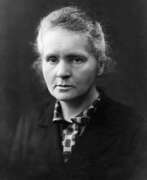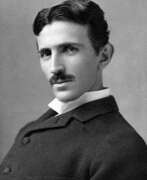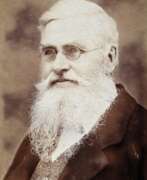Naturalists 20th century


Sherman Foote Denton was an American naturalist, inventor, illustrator, and writer.
Denton was one of the best later natural history artists. He served as an artist for the Smithsonian Institution's U.S. Fish Commission and was commissioned by the Smithsonian Institution to create the book Game Fish of New York. And the annual reports of the Fish and Game of New York State for 1895-1909 featured 99 species of freshwater and marine fish, as well as a number of other items, including lobsters, oysters, ring-necked pheasant, and Virginian deer. These have been published in both book and folio form. Denton also developed a method of mounting fish that preserved their lifetime color.
Along with his brothers Shelley Wright and Robert Winsford, Denton founded the Denton Brothers Butterflies Company, which sold butterfly specimens. Sherman invented and patented in 1901 the mounting of scale specimens on a white plaster tablet under glass instead of the traditional mounting.


Alphonse Dubois, full name Alphonse Joseph Charles Dubois, was a Belgian naturalist and physician.
Alphonse Dubois had a doctorate in medicine and in 1869 became curator of vertebrate animals at the Royal Museum of Natural History in Brussels. He worked with his father, the academician Charles-Frédéric Dubois (1804-1867), on the publication Les Oiseaux de l'Europe et leurs œufs (The Birds of Europe and their Eggs), completing it after his father's death. The book consisted of two volumes, the second of which consisted of illustrations by Dubois Sr.


William Henry Edwards was an American amateur naturalist, entomologist, and businessman.
Edwards was a pioneer in the West Virginia coal industry, opening some of the earliest mines in the southern part of the state. He was also an accomplished naturalist and widely recognized as an authority on North American butterflies. As a businessman, he was involved in the coal industry, but the study of butterflies remained his passion.
During his lifetime he published some 250 scientific papers on scales, including a three-volume treatise, Butterflies of North America, which is highly regarded for its scholarship and the quality of its illustrations. Edwards paid great attention to the life stages of the insects in question, describing each stage in detail. The illustrations, on the other hand, were drawn by Mary Pirt, a talented Pennsylvania artist, and hand-colored by Lydia Brown.


Sir John Forrest was an Australian naturalist, traveler and politician.
He worked as a surveyor and led several exploratory pioneering expeditions to western Australia. On his second voyage in 1870-1871, Forrest made an instrumental survey of the entire southwest coast of Australia from Perth to Adelaide. He later served as Australia's Minister for Defense, and as the first Premier of Western Australia (1890-1901), Forrest sponsored the construction of public works and negotiated the state's entry into the Commonwealth of Australia in 1901.


Theophilus Johnson was a British artist, amateur naturalist and publisher.
He trained as a clerical worker and then started his own printing business. Johnson had a passion for the natural sciences and spent much time in the gardens of the Zoological Society of London. His drawings and books cover a wide range of topics, from molluscs to mammals, but his main interest was entomology.
Theophilus Johnson's publications on entomology depict the various species of moths found in the British Isles on beautifully colored watercolor sheets, and include illustrations of their larvae as well as the plants they feed on. During his lifetime he illustrated more than 46 volumes with original watercolors.


Frederic Moore was a British illustrator, naturalist and entomologist.
Moore worked for many years as assistant curator for the East India Company at the London Museum and discovered many species of butterflies. He also published six volumes on the butterflies of South Asia (Lepidoptera Indica) and a catalog of birds in the East India Company's collection.
Frederic Moore was a member of the Linnean Society of London and the Entomological Society of London.


Seth Lister Mosley was a British artist, naturalist and ornithologist.
Although Mosley had no specialized training, he came from a naturalist's family and from a young age was involved in the study of natural history. He visited almost every museum in Britain and became one of the foremost British naturalists in the late nineteenth century.
Mosley was widely known as a taxidermist, illustrator, naturalist, magazine editor, and newspaper columnist. He managed several private museums in Huddersfield before being appointed Keeper of Collections at Huddersfield Technical College, and in 1922 he became the first curator of the Tolson Memorial Museum.


Robert Henry Fernando Rippon was a British zoologist, entomologist and illustrator.
Rippon was a musician, but later became passionate about natural history. In the 1860s he made a collecting trip to Panama, New Grenada and South America, and around the same time his talent as a natural history artist developed.
In 1890, Rippon began work on a multi-volume work on the butterfly-birdwings Icones Ornithopterum. He wrote the text himself, drew, lithographed, and hand-colored the plates. The work, eventually published in 25 parts, became his "principal and almost all-purpose occupation" for nearly 20 years.
After Rippon's death, his vast collection was donated to the Natural History Museum. The insects alone numbered 105,760, including more than 21,000 butterflies and 17,000 moths.


Ivan Mikhailovich Sechenov (Russian: Иван Михайлович Сеченов) was a Russian natural scientist, psychologist and physiologist, teacher and educator.
Ivan Mikhailovich was born into an impoverished noble family in the village of Teply Stan, Kurmysh uyezd, Simbirsk province (now the village of Sechenovo, Nizhny Novgorod region), graduated from the Main Military Engineering School, then from the Medical Faculty of Moscow University. For three and a half years Sechenov studied in Germany, engaged not only in biological disciplines, but also in physics and analytical chemistry. Abroad he became friends with S. P. Botkin, D. I. Mendeleev, A. P. Borodin, and the artist A. Ivanov.
In 1860 in St. Petersburg at the Imperial Academy of Medicine and Surgery Sechenov defended his dissertation on "Materials for the Physiology of Alcoholic Intoxication" and received the degree of Doctor of Medicine. Soon he received the post of extraordinary professor at this academy and organized one of the first physiological laboratories in Russia in his department. His record includes work in the laboratory of D. I. Mendeleev, head of the Department of Physiology at Odessa Novorossiysk University, teaching at St. Petersburg University, and professor in the Department of Physiology at Moscow University. Sechenov gave much effort to the development of women's education. He participated in the organization and work of the Higher Women's Courses in the capital, taught at women's courses at the Society of Educators and Teachers in Moscow.
Ivan Sechenov is the founder of the doctrine of mental regulation of behavior, the creator of the first physiological scientific school in Russia. For the first time in history he substantiated the reflex nature of conscious and unconscious activity. He showed that the basis of mental phenomena is physiological processes, substantiated the importance of metabolic processes in the realization of the body's reactions to stimuli. He laid the foundations of physiology of labor, age, comparative and evolutionary physiology. He studied the respiratory function of blood.
Sechenov's main works: "Reflexes of the brain" (1863), "Physiology of the nervous system" (1866), "Elements of thought" (1878), "Sketch of human working movements" (1901), etc. In addition, Sechenov edited "The physiology of the nervous system" (1866). In addition, Sechenov edited translations of books by foreign scientists. Thus, in 1871-1872 under his editorship in Russia was published a translation of Charles Darwin's work "The Origin of Man and Sexual Selection". Among his students were Ilya Mechnikov, Ivan Pavlov, Kliment Timiryazev, Nikolai Vvedensky, and Ivan Tarkhanov, who became famous scientists.


Charles Frederick Tunnicliffe was a British naturalist painter and illustrator.
Tunnicliffe drew from an early age and studied painting at King's College. He gained success and recognition with his woodcuts for Henry Williamson's novel Tarka the Otter (1932), and illustrated many other animal books. Tannicliffe was striking in his accurate and naturalistic depiction of birds and animals in their natural habitat, and these illustrations are still popular today.
Charles Tunnicliffe published several books of his bird illustrations and drew many illustrations for the covers of the Royal Society for the Protection of Birds' Bird Notes magazine. In 1954 he became a full member of the Royal Academy. From 1947 until his death he lived and worked on the Isle of Anglesey in North Wales, observing nature and birds.













